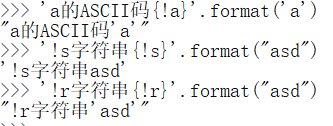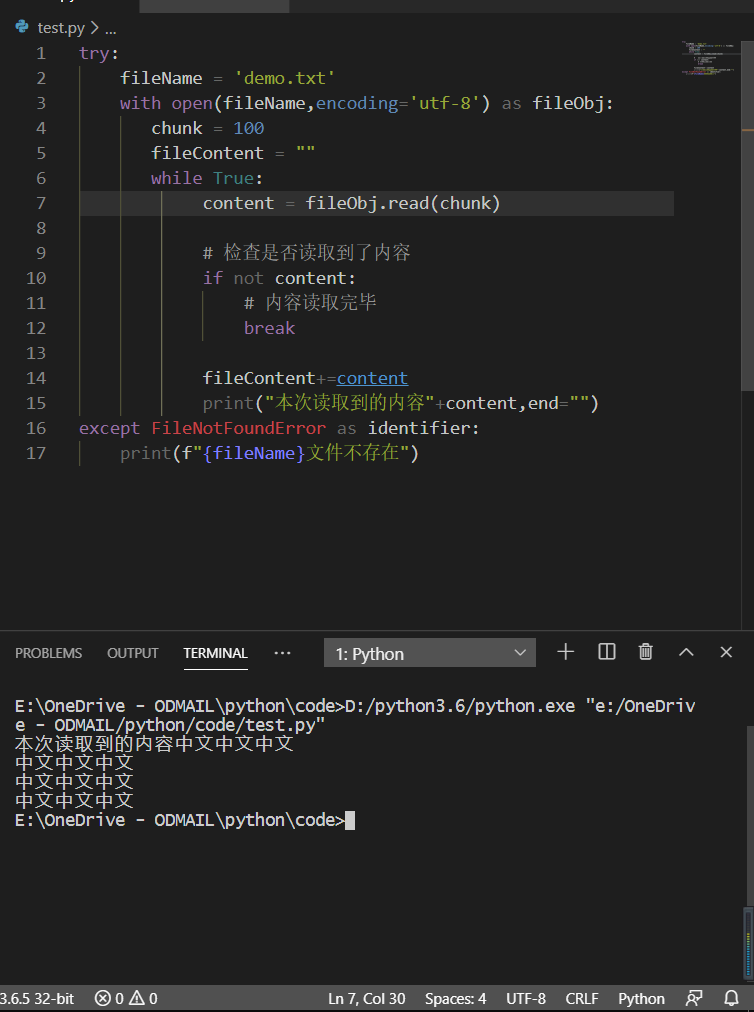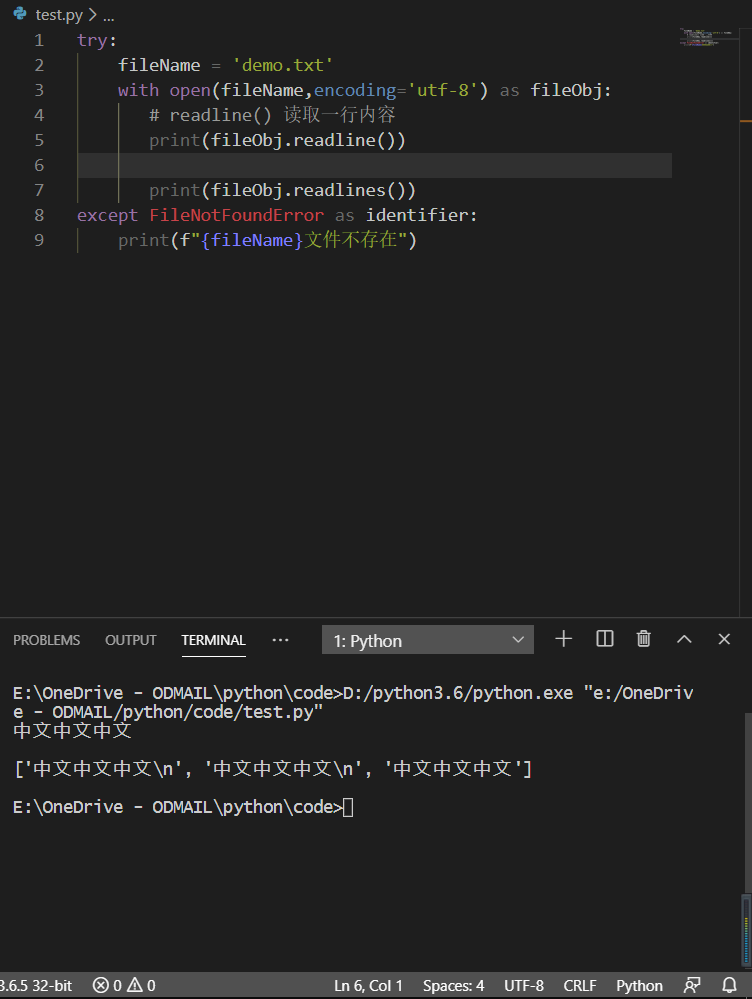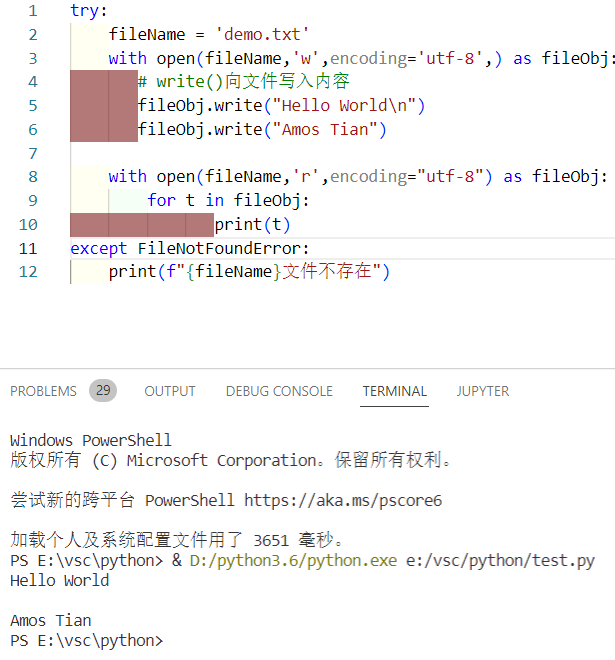Python-进阶-IO
10. 标准IO
10.1 读取键盘输入
Python提供了 input() 函数从标准输入中读入一行文本,默认的标准输入是键盘
1 | ss = input("输入提示:") |
10.2 标准输出
- 表达式语句
- print() 函数
10.2.1 表达式转化成字符串输出
str():返回一个用户易读的表达式,去掉字符串标志''或""repr():产生一个解释器易读的表达式,保留字符串标志''或""
1 | s = 'Hello world' |
10.2.2 字符串格式化
rjust(整数) :将字符串靠右,并在左边填充空格
ljust(整数) :将字符串靠左,并在右边填充空格
center(整数) :将字符串居中,并在两边填充空格
1 | for x in range(1, 11): |
zfill(整数) :在数字左边添加0
1 | '12'.zfill(5) #'00012' |
10.2.3 str.format()
str中的{}会被format()中的参数替换
在 {} 中的数字用于指向对象在 format() 中的位置
- 如
{0}指向format(a,b,c)中的a
1 | print('{}网址: "{}!"'.format('菜鸟教程', 'www.runoob.com')) |
format(name1=value1) 中还可指定关键字参数,与 {name1} 同名
- 关键字参数要在位置参数之后
1 | '{name}网址: {0}'.format('www.runoob.com',name='菜鸟教程') |
!a 表示使用 ascii() ,!s 表示使用 str() ,!r 表示使用 repr() 用于在格式化某个值之前对其进行转换

在 : 后 传入一个整数,可以保证该域的宽度,用于打印表格
1 | table = {'Google': 1, 'Runoob': 2, 'Taobao': 3} |
.format() 中可以传入一个字典,可以使用 [] 访问键值
1 | table = {'Google': 1, 'Runoob': 2, 'Taobao': 3} |
11. 文件IO
标准输出文件可以用
sys.stdout引用
I/O(Input/Ouput)
文件操作步骤
- 打开文件
- 对文件进行操作
- 保存
- 关闭文件
11.1 打开文件
使用
open()函数打开文件,返回一个文件的对象
fileObj.close()方法关闭文件
1 | open(file, mode='r',buffering = -1,encoding=None,errors=None,newline=None,closefd=True,opener=None) |
file:要打开的文件路径
需要注意相对路径与绝对路径,在 Windows 下,可以用
/代替\,或者\\代替\,或者使用原始字符串r"str"使用
..返回上一级目录如果目标文件距离当前文件较远,使用绝对路径
1 | try: |
11.2 文件操作
1 | # with ... as |
11.3 文件读取
read() 方法用来读取文件的内容,会将内容保存为一个字符串返回
默认为纯文本格式打开,编码为 None
1 | try: |
11.3.1 文件读取格式
- 纯文本格式,默认
utf-8编写文本文件 - 二进制文件(图片,mp3,ppt)
11.3.2 读取中文文件
指定文件编码为
utf-8
1 | try: |

11.3.3 读取大文件
指定 size=-1
- 指定要读字符的数量,默认值为
-1,读取文件中所有字符 read()会记录上次读取位置,若读取到文件末尾,则返回空串""
1 | try: |
11.3.4 读取一行
readline()读取一行内容
readline()自动换行
readlines()一次读取到的内容返回,封装到一个列表中返回
1 | try: |

11.3.5 直接遍历文件对象
1 | fileObj = open(fileName) |
11.4 文件写入
write() :使用 open() 打开文件,需要指定要做的操作
r:表示只读w:表示可写文件存在,则覆盖原文件
文件不存在,则创建文件
a:表示追加内容文件存在,则向文件追加内容
文件不存在,则创建文件,新增内容
+:表示增加权限r+:即可读又可写,文件不存在则报错w+a+x:表示创建文件不存在,则创建
存在,则报错
1 | try: |

11.5 二进制文件
open() 参数
p:读取文本文件b:以字节形式读取二进制文件
1 | # 读取filename中的文件,写入新对象中 |
11.6 seek()&tell()
fileObj.tell():查看当前读取位置fileObj.seek():切换读取位置- arc1,切换的位置
- arc2,计算位置方式
- 0:从头计算,默认
- 1:从当前位置计算
- 2:从最后位置开始计算
11.7 其他操作
需要引入
os
1 | import os |